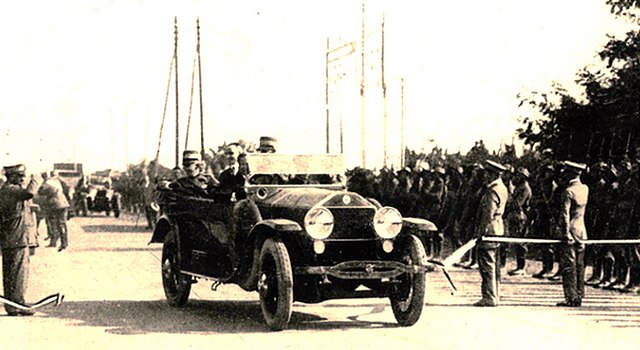Roads in Italy are an important mode of transport in Italy. The classification of the roads of Italy is regulated by the Italian traffic code, both from a technical and administrative point of view. The street nomenclature largely reflects the administrative classification. Italy is one of the countries with the most vehicles per capita, with 690 per 1000 people in 2010.
Ancient Roman Appian Way
Nowadays Strada statale 7 Via Appia
The King Victor Emmanuel III of Italy inaugurated the Autostrada dei Laghi ("Lakes Motorway"; now parts of the Autostrada A8 and Autostrada A9), the first motorway built in the world, on 21 September 1924, aboard the royal Lancia Trikappa
Toll gate of the Autostrada dei Laghi ("Lakes Motorway") in Milan in 1924
Italy has a well developed transport infrastructure. The Italian rail network is extensive, especially in the north, and it includes a high-speed rail network that joins the major cities of Italy from Naples through northern cities such as Milan and Turin. The Florence–Rome high-speed railway was the first high-speed line opened in Europe when more than half of it opened in 1977. Italy has 2,507 people and 12.46 km2 per kilometer of rail track, giving Italy the world's 13th largest rail network. The Italian rail network is operated by state-owned Ferrovie dello Stato, while the rail tracks and infrastructure are managed by Rete Ferroviaria Italiana.
The Autostrada dei Laghi ("Lakes Motorway"; now parts of the Autostrada A8 and the Autostrada A9) near Besnate, the first motorway built in the world.
Milano Centrale railway station is the largest railway station in Europe by volume.
An ETR 500 train running on the Florence–Rome high-speed line near Arezzo, the first high-speed railway opened in Europe.
FS' Frecciarossa 1000 high speed train at Milano Centrale railway station, with a maximum speed of 400 km/h (249 mph), is one of the fastest trains in Europe.








